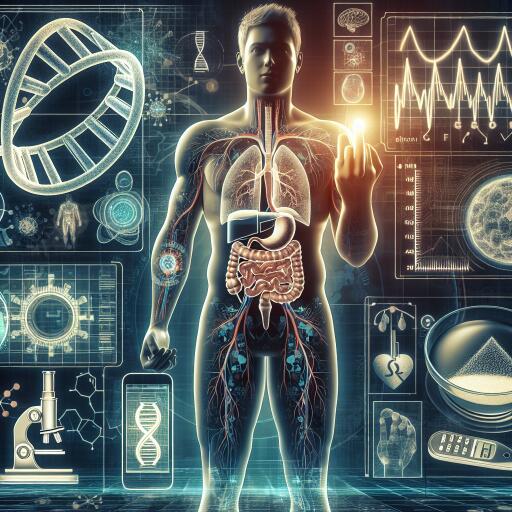Transforming Diabetes Care Through Continuous Glucose Monitoring and Personalized Insulin Metabolism Models
The evolution of diabetes care is moving towards more personalized and precise management strategies, with the recent study published in Scientific Reports highlighting a significant stride in this direction. By integrating continuous glucose monitoring (CGM) devices into the calibration of personalized glucose-insulin models, researchers aim to revolutionize how individuals with diabetes, especially those with overweight or obesity, manage their condition.
Study Overview
The groundbreaking study was centered around the use of interstitial glucose data collected from CGM devices during an Oral Glucose Tolerance Test (OGTT). This approach was compared against conventional methods utilizing plasma glucose measurements, with the goal of enhancing the calibration of personalized glucose-insulin metabolic models. Conducted as part of the PERSonalized Glucose Optimization Through Nutritional Intervention (PERSON) study, this research adhered to ethical guidelines and enrolled participants based on strict criteria focused on age, BMI, and insulin resistance, among others.
Methodology and Experimentation
Participants underwent a detailed clinical investigation involving an OGTT and wore a CGM device for 6 days. This dual approach enabled the collection of comprehensive glucose and insulin response data. The innovative use of CGM devices, calibrated using capillary glucose self-measurements, offered a novel lens through which to view and understand glucose dynamics.
Personalized Modeling and Computational Analysis
The study utilized the Eindhoven-Diabetes Education Simulator, a mathematical model simulating insulin-mediated glucose regulation. This approach allowed for the use of CGM data in model calibration, marking a considerable advancement in the field. Researchers embarked on a detailed computational analysis to derive model parameters that reflect various glucose metabolism aspects, such as glucose appearance in the gut and the rate of insulin-dependent glucose uptake.
Findings and Implications
The analysis illuminated the superior efficacy of CGM-based data in calibrating personalized metabolic models compared to traditional plasma glucose measurements. The calibrated models demonstrated improved fit, practical identifiability, and a robust correlation with clinical indices of metabolic health.
This research denotes a significant step towards the integration of CGM technology in the personalized management of diabetes. By tailoring diabetes care to individual metabolic profiles, healthcare providers can offer more precise and effective treatment strategies. Furthermore, this study emphasizes the potential of continuous glucose monitoring not just as a tool for monitoring but as a cornerstone in predictive health care.
Concluding Remarks
The successful application of CGM data in the calibration of glucose-insulin models opens new avenues for personalized diabetes management. As CGM technology continues to evolve, its incorporation into predictive modeling and therapeutic decision-making will undoubtedly enhance the efficacy of diabetes care. This study not only highlights the potential of leveraging CGM data in personalized medicine but also paves the way for future innovations in healthcare technologies aimed at improving the lives of those with diabetes.
With continuous advancements in technology and a deeper understanding of glucose metabolism, the dream of fully personalized diabetes management is rapidly becoming a reality. As research continues to push the boundaries, the promise of a more targeted and effective diabetes care strategy offers hope to millions worldwide.








